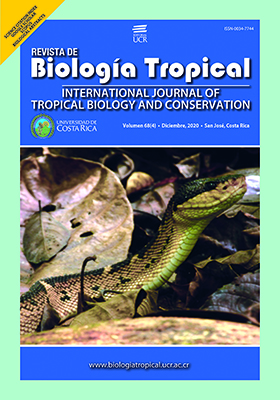Abstract
ABSTRACT. Introduction: The fiber of the Gynerium sagittatum Aubl. P. Beauv is raw material for the elaboration of several handcrafts, which are symbols of Colombian cultural identity. In the manufacture process, different genotypes are used according to the fiber quality and the type of craftsmanship, but it is believed that Gynerium is a complex species, and to date, there is no agreement on whether these genotypes belong to the same species or to different species. Objective: The aim of this study was to quickly and accurately identify wild cane plants using the nuclear ribosomal internal transcribed spacer (ITS1+ITS2), three chloroplast regions (matK, rbcL, ycf1), and their combinations. Methods: Different tests were used for discrimination: (1) inter and intraspecific distances, (2) Best Match (BM), Best Close Match (BCM), and tree-based method (3) Neighbor Joining (NJ) and (4) maximum likelihood and bayesian inference in molecular data. Results: The results showed that BM and BCM approaches revealed the low rate of correct species identification for ITS+matK (33.3 %) and ITS (28.6 %) loci, showing similarity among sequences. These results were further supported by tree-based analyses, where all individual regions and the different gene combinations had a zero discrimination rate. Conclusions: all genotypes belong to the same species of wild cane, therefore existing morphological differences can be related to phenotypic plasticity.
##plugins.facebook.comentarios##

This work is licensed under a Creative Commons Attribution 4.0 International License.
Copyright (c) 2020 Hernando Rivera Jiménez


